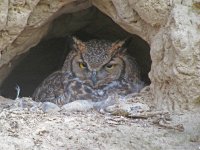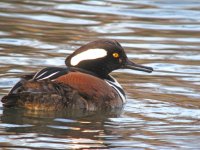Well it took a few days (work, of all things got in the way) before I could get out again. Today was a sunny day so decided to take the scope and adapter and do some digiscoping.
This time I was prepared as I set the camera up just right ahead of time and took the alum wrench with me just in case I needed to adjust something.
I felt good about the process now of setting up the scope, focusing in on the bird, swinging the adapter/camera down and taking the picture. I do notice the "pressing of the shutter button' does make the camera wiggle a bit, so will eventually look into getting a remote switch to take photos.
I transported the tripod and scope/adapter in my car with the legs of the tripod already extended to where I would want them. When going to a spot, I merely placed the scope and tripod over my shoulder and walked to where I took photos from. This worked fine and much easier to do than attempting to extend the tripod legs in the field. Not cumbersome as I carry the scope and tripod on shoulder regardless if legs are extended or not, so no big deal.
I don't like the idea of having the eyepiece cap not attached to the eyepiece. When I place the camera adapter on (swaro)...it makes me take unhook the safety string which attaches to the cap, ...thus the cap might fall off, it didn't....but I worry about that.
I fumbled with my glasses, going from sunglasses to reading, so need to bring upon my "Cheater" sunglasses next time. Also, the bill of a baseball cap gets in the way when the adapter is swung up, as I look solely thru the scope. When the adapter is down, no problem. I usually focus the camera first, swing down the adapter and take the shot. If a non moving bird like the owl, see attached image....it is a perfect shot. If the bird is moving such as a hooded merganser I foto'd, I find I have to move the scope and take the image at the same time, thus not getting what I call the best photo but not bad either, see attached.
Things to work on....better job of following a bird while camera in place on adapter and scope. A moving bird is tougher to photograph and get sharp, even waterfoul. I feel good about the general field work/process I did, I freely did the little things such as place / swing adapter in place, focus, take image etc. I would like to see if a better camera would take images a bit quicker, although this Canon 1200 IS does a fairly good job, especially since the salesman at the store recommended it as being one that would take an image quick. I keep the IS on for now even though I am using a tri pod for there is still movement in some sense as I pan the bird and move the scope to capture the bird (hooded merganser). Also, since their is movement in the camera as I snap the image, I keep IS on.
So, just more practice, more birds...see which birds come into focus and which do not. I notice that finding the bird using a scope is not as easy as using a camera + lens such as my canon and 300mm lens. Need to work on that too.
This time I was prepared as I set the camera up just right ahead of time and took the alum wrench with me just in case I needed to adjust something.
I felt good about the process now of setting up the scope, focusing in on the bird, swinging the adapter/camera down and taking the picture. I do notice the "pressing of the shutter button' does make the camera wiggle a bit, so will eventually look into getting a remote switch to take photos.
I transported the tripod and scope/adapter in my car with the legs of the tripod already extended to where I would want them. When going to a spot, I merely placed the scope and tripod over my shoulder and walked to where I took photos from. This worked fine and much easier to do than attempting to extend the tripod legs in the field. Not cumbersome as I carry the scope and tripod on shoulder regardless if legs are extended or not, so no big deal.
I don't like the idea of having the eyepiece cap not attached to the eyepiece. When I place the camera adapter on (swaro)...it makes me take unhook the safety string which attaches to the cap, ...thus the cap might fall off, it didn't....but I worry about that.
I fumbled with my glasses, going from sunglasses to reading, so need to bring upon my "Cheater" sunglasses next time. Also, the bill of a baseball cap gets in the way when the adapter is swung up, as I look solely thru the scope. When the adapter is down, no problem. I usually focus the camera first, swing down the adapter and take the shot. If a non moving bird like the owl, see attached image....it is a perfect shot. If the bird is moving such as a hooded merganser I foto'd, I find I have to move the scope and take the image at the same time, thus not getting what I call the best photo but not bad either, see attached.
Things to work on....better job of following a bird while camera in place on adapter and scope. A moving bird is tougher to photograph and get sharp, even waterfoul. I feel good about the general field work/process I did, I freely did the little things such as place / swing adapter in place, focus, take image etc. I would like to see if a better camera would take images a bit quicker, although this Canon 1200 IS does a fairly good job, especially since the salesman at the store recommended it as being one that would take an image quick. I keep the IS on for now even though I am using a tri pod for there is still movement in some sense as I pan the bird and move the scope to capture the bird (hooded merganser). Also, since their is movement in the camera as I snap the image, I keep IS on.
So, just more practice, more birds...see which birds come into focus and which do not. I notice that finding the bird using a scope is not as easy as using a camera + lens such as my canon and 300mm lens. Need to work on that too.





